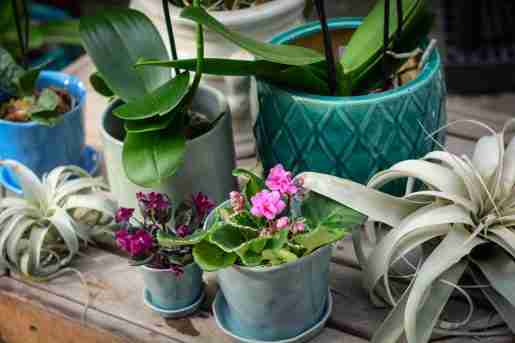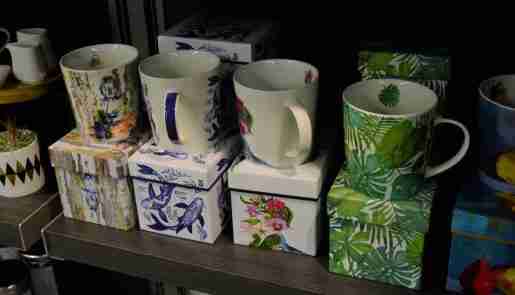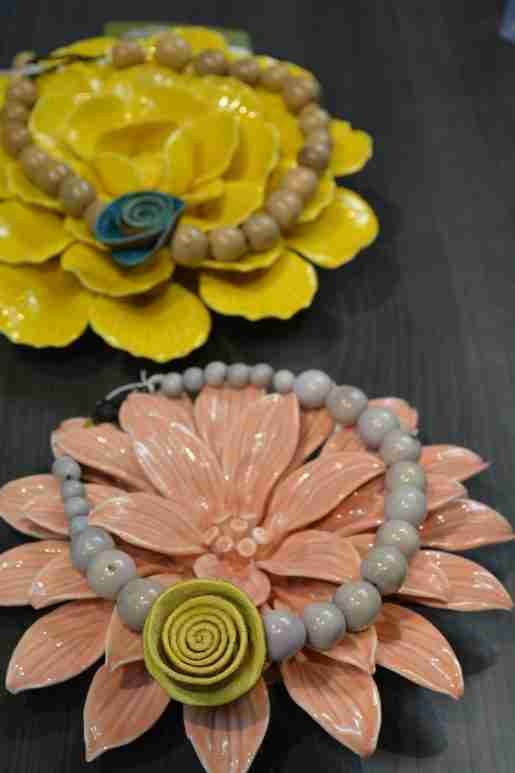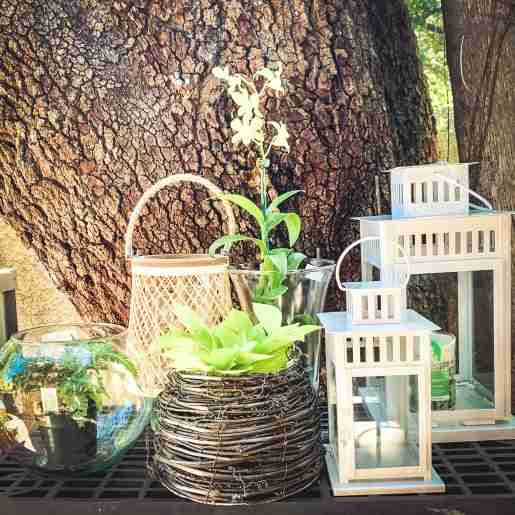Botanical Garden Stores A Garden of Gift Sales |
|
|
|
Visitors to botanical gardens are drawn to nature’s beauty. So, when selecting merchandise for the gift shop that will surely be a hit with patrons, it’s only natural to offer merchandise that is garden themed.  Plants on display at the Marie Selby Botanical Gardens. A screened-in outdoor plant area adds additional square footage to the gift operation. Plants on display at the Marie Selby Botanical Gardens. A screened-in outdoor plant area adds additional square footage to the gift operation.For Alyssa Henry, volunteer programs manager at the Washington Park Arboretum – Mary Ellen Mulder Arboretum Gift Shop, in Seattle, Wash., high-quality greeting cards that are botanical- or animal-themed are all the rage. “Most of them are drawn images, watercolor images or pressed flowers,” she said. “From nice paper, to embossing, to quality envelopes and top-notch imagery, the cards exude artistry and charm.” At least 40 percent of the cards hail from local card designers, because customers like to support their community. “Photographic cards don’t sell as well,” Henry said. “This is probably because customers may look at a photograph and wonder if they could take it themselves; rarely do they look at a beautiful watercolor image or pressed flower arrangement and think that they could do that themselves.” “We generally curate these based on the season—particularly those that are in the shape of a leaf, flower or plant—to reflect what is popular in our garden at the time,” Henry said. “These sell well because they remind visitors of a special plant or place that they love, and offer a classy way to keep it with them.”  Plants in decorate containers at the Marie Selby Botanical Gardens. Great displays entice guests to visit the store. Plants in decorate containers at the Marie Selby Botanical Gardens. Great displays entice guests to visit the store.Fold-out field guides are also best-sellers, with the most popular ones being about plant, bird and Sasquatch identification. “People are curious and interested in the natural world around them, and the 230-acre park and garden they are about to explore,” Henry said. “I think we’re particularly well-poised to sell these guides because our garden is free and open to the public. Patrons are far more likely to purchase a laminated folding field guide for $10 that will last for years to come when they don’t have to pay an entrance fee to use it.”  Home décor merchandise in blues and whites at the Marie Selby Botanical Gardens. The store offers one-of-a-kind pots. Home décor merchandise in blues and whites at the Marie Selby Botanical Gardens. The store offers one-of-a-kind pots.Nathaniel T. Cardelli, sales operations supervisor, Foellinger-Freimann Botanical Conservatory, Fort Wayne, Ind., said custom butterfly kits assembled in-house are always a top seller. “Our garden features a seasonal non-migratory/non-native butterfly exhibit from April through July, and the painted lady is a great capstone for folks wrapping up their visit to the conservatory,” he said. The kit contains larvae in a sauce cup along with its food and a habitat appropriate for hatching in a custom bag. Nearly 2,000 of these kits sell annually.  Decorative mugs for sale at the Marie Selby Botanical Gardens, Sarasota, Fla. Guests like to bring home a memento of their visit. Decorative mugs for sale at the Marie Selby Botanical Gardens, Sarasota, Fla. Guests like to bring home a memento of their visit.Botanical-themed boxed mugs are also quite popular because they make great gifts. “Whether it’s our custom flower pot mug, a mug of the month or a traveler, these items are always a sell-out,” Cardelli said. At Marie Selby Botanical Gardens, Sarasota, Fla., orchids are highly sought after. “Guests want to bring home what they see during their visit,” said Tina Scarpino, interim director of visitor and detail services. “With a wide variety to choose from, new and experienced orchid collectors can find something they like.” Pots and arrangements are also popular with visitors. Garden staff can create unique arrangements for any event, gift or home display, Scarpino said. The shop also has a vast selection of colorful, one-of-a-kind pots. Orchid or botanical-related jewelry also makes the best-sellers list, as guests like to commemorate their visit with novelty jewelry, Scarpino said. Dennis Gutmann, bookstore manager, San Francisco Botanical Garden Bookstore, San Francisco, Calif., said vintage botanical tea towels that are 100 percent natural cotton sell well. They feature a hanging loop of cotton twill and are packaged in a muslin drawstring bag. Canvas totes also fly off the shelves. They are also 100 percent natural cotton and feature an interior pocket. Vintage botanical posters that are beautifully printed on high-quality paper are also best-sellers. Images are reproduced from antiquarian books. He believes these items sell well because they are reasonably priced and easily transportable.  Merchandise on display at the Marie Selby Botanical Gardens. The indoor area of the garden shop is 3,951 square feet. Merchandise on display at the Marie Selby Botanical Gardens. The indoor area of the garden shop is 3,951 square feet.Display Tips Henry likes to use natural-looking items for display purposes, or mix them in with displays. For example, a scarf rack is made from an old tree branch. Items are set on real wood rounds, and old driftwood is used to display jewelry. Pieces of moss and dried flowers adorn a high-end jewelry case. Another display strategy that Henry employs is to keep like card brands and styles together. “If someone is attracted to a particular style, they might buy all of them because they cannot decide which one to live without,” she said. Henry is also a fan of creating displays around themes. For example, during pollinator season, the shop groups many items that have a bee, flower or honey theme together. Cardelli’s 725-square-foot shop was formerly merchandised by color; however within the past year it underwent a merchandising transition and it is seeking inspiration from other boutique-style stores. Merchandising by category and utility has gone a long way. The shops garners between $115,000 and $130,000 annually. Gutmann displays items by category. For example, tea towels, totes and posters each have their own display space.  Merchandise on display at the Marie Selby Botanical Gardens. The indoor area of the garden shop is 3,951 square feet. Merchandise on display at the Marie Selby Botanical Gardens. The indoor area of the garden shop is 3,951 square feet.Hot Spots Cardelli has found a great deal of success with a gift table measuring about 12 feet in length by three feet wide. “We use risers on the table to create an impactful moment in the shop that could keep a curious gift buyer occupied for a while,” he said. The front of the shop is adorned with houseplants for sale, which have drawn people into the shop. A dynamic and enticing display draws guests to the plant area, Scarpino said. Attention to detail is also devoted to unique floral displays in the welcome center, where people first enter Selby Gardens. The intent is to entice people to visit the shop after they have walked through the gardens. The indoor area of the garden shop is 3,951 square feet, while the screened-in outdoor plant area is an additional 2,261 square feet. For Gutmann, outside the store is a hot spot. A display is on the path leading to the garden entry. Visitors pass directly in front of the 70-square-foot kiosk on their way to the admissions booth. |
